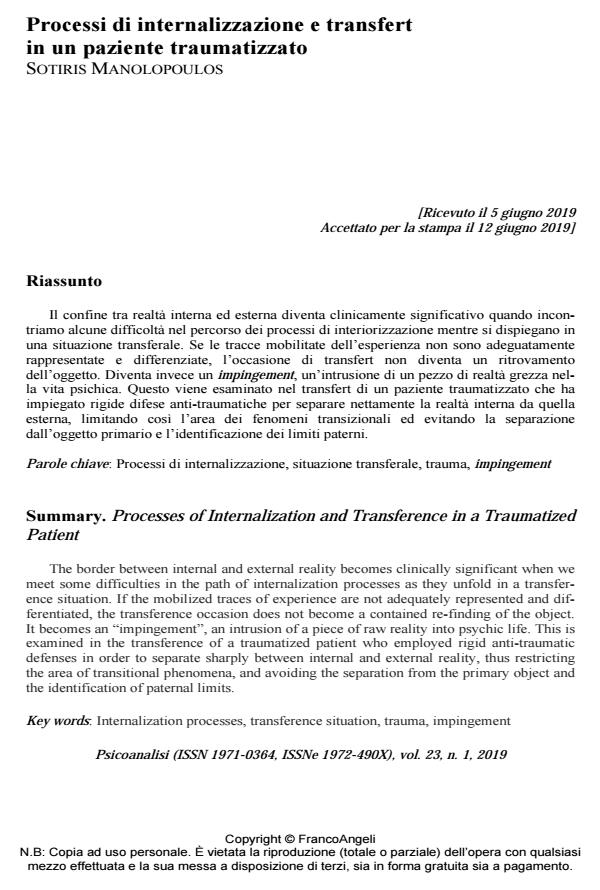Processes of Internalization and Transference in a Traumatized Patient
Journal title PSICOANALISI
Author/s Sotiris Manolopoulos
Publishing Year 2019 Issue 2019/1
Language Italian Pages 14 P. 41-54 File size 181 KB
DOI 10.3280/PSI2019-001005
DOI is like a bar code for intellectual property: to have more infomation
click here
Below, you can see the article first page
If you want to buy this article in PDF format, you can do it, following the instructions to buy download credits

FrancoAngeli is member of Publishers International Linking Association, Inc (PILA), a not-for-profit association which run the CrossRef service enabling links to and from online scholarly content.
The border between internal and external reality becomes clinically significant when we meet some difficulties in the path of internalization processes as they unfold in a transference situation. If the mobilized traces of experience are not adequately represented and differentiat-ed, the transference occasion does not become a contained re-finding of the object. It becomes an "impingement", an intrusion of a piece of raw reality into psychic life. This is examined in the transference of a traumatized patient who employed rigid anti-traumatic defenses in order to separate sharply between internal and external reality, thus restricting the area of transitional phenomena, and avoiding the separation from the primary object and the identification of pa-ternal limits.
Keywords: Internalization processes, transference situation, trauma, impingement
Sotiris Manolopoulos, Processi di internalizzazione e transfert in un paziente traumatizzato in "PSICOANALISI" 1/2019, pp 41-54, DOI: 10.3280/PSI2019-001005